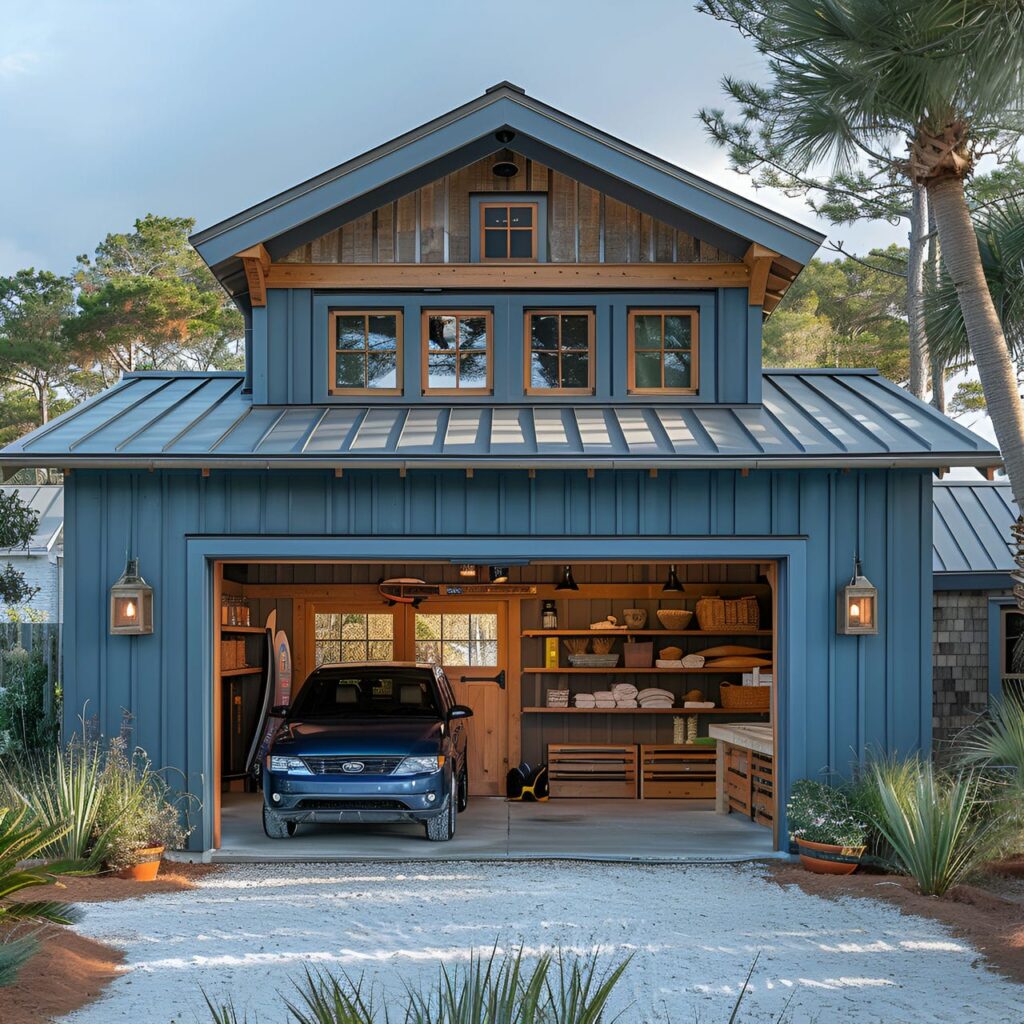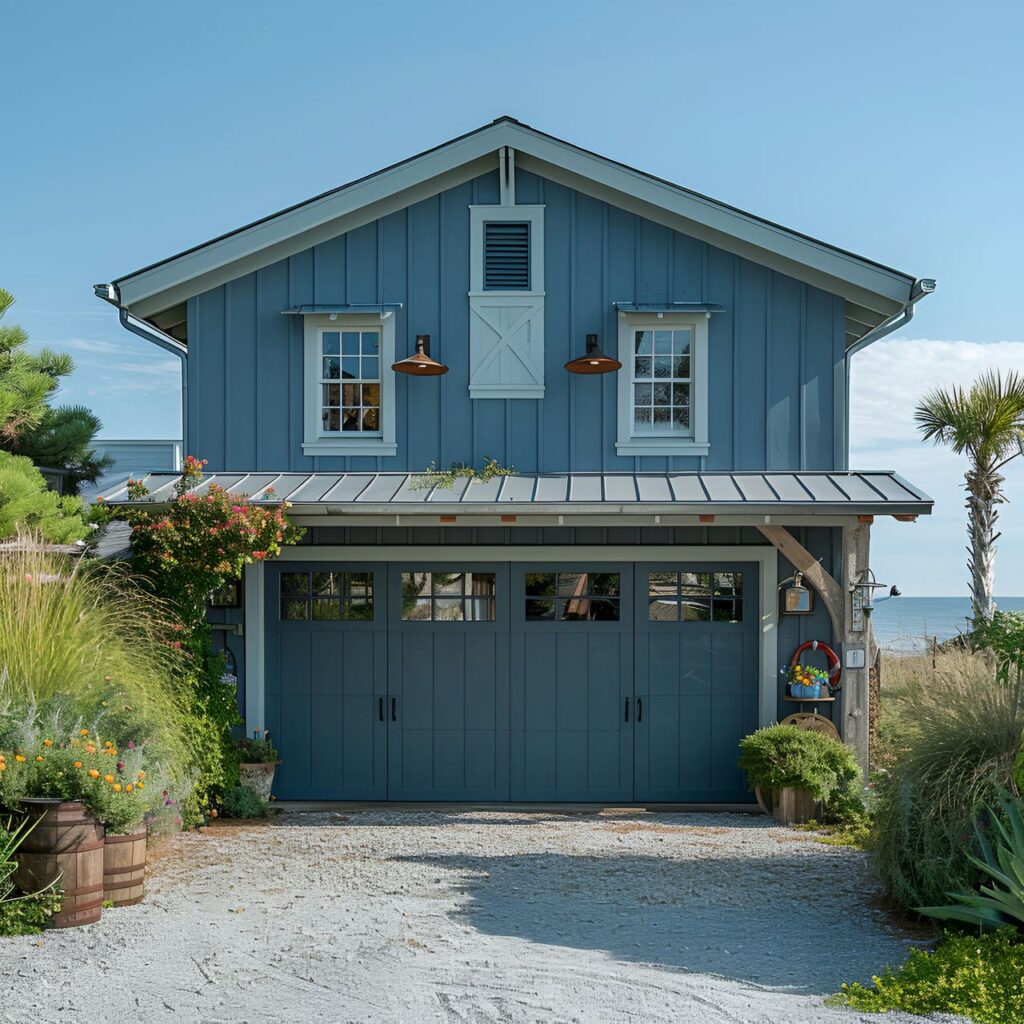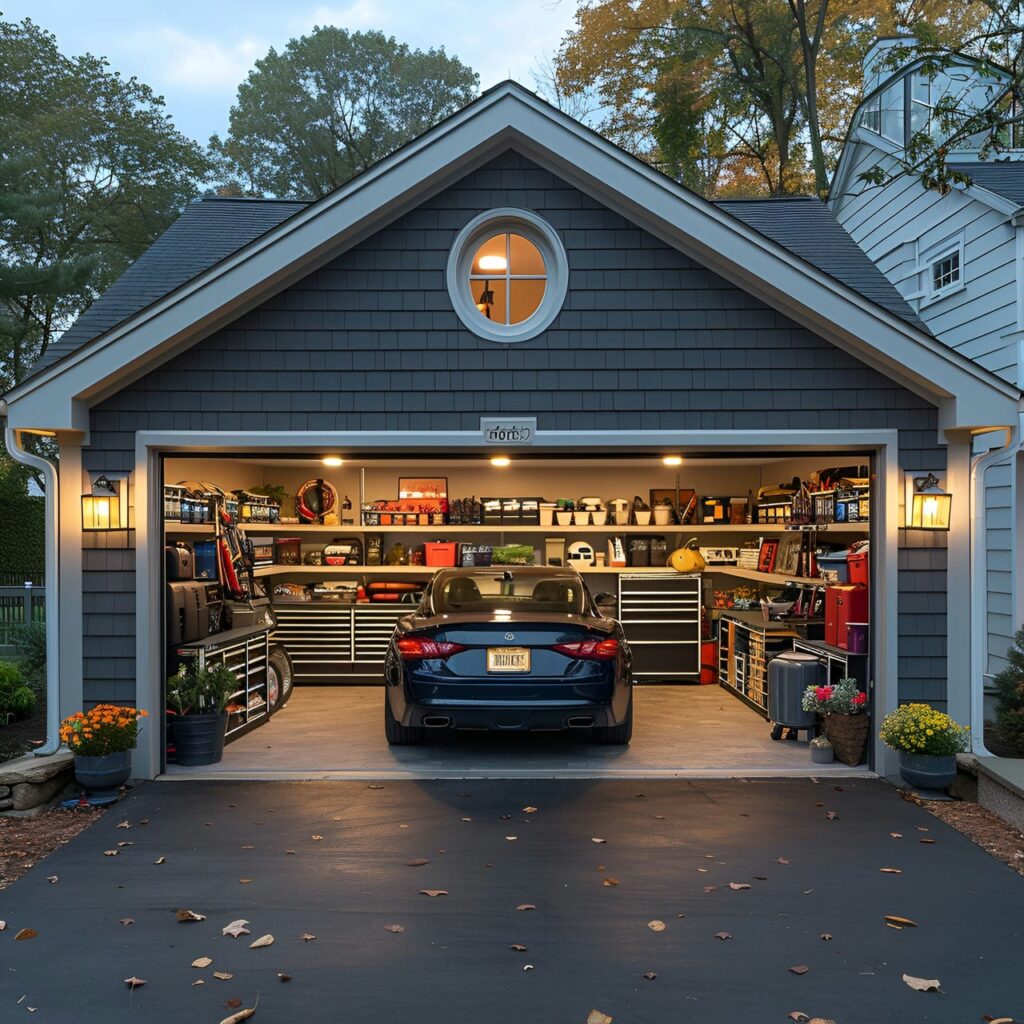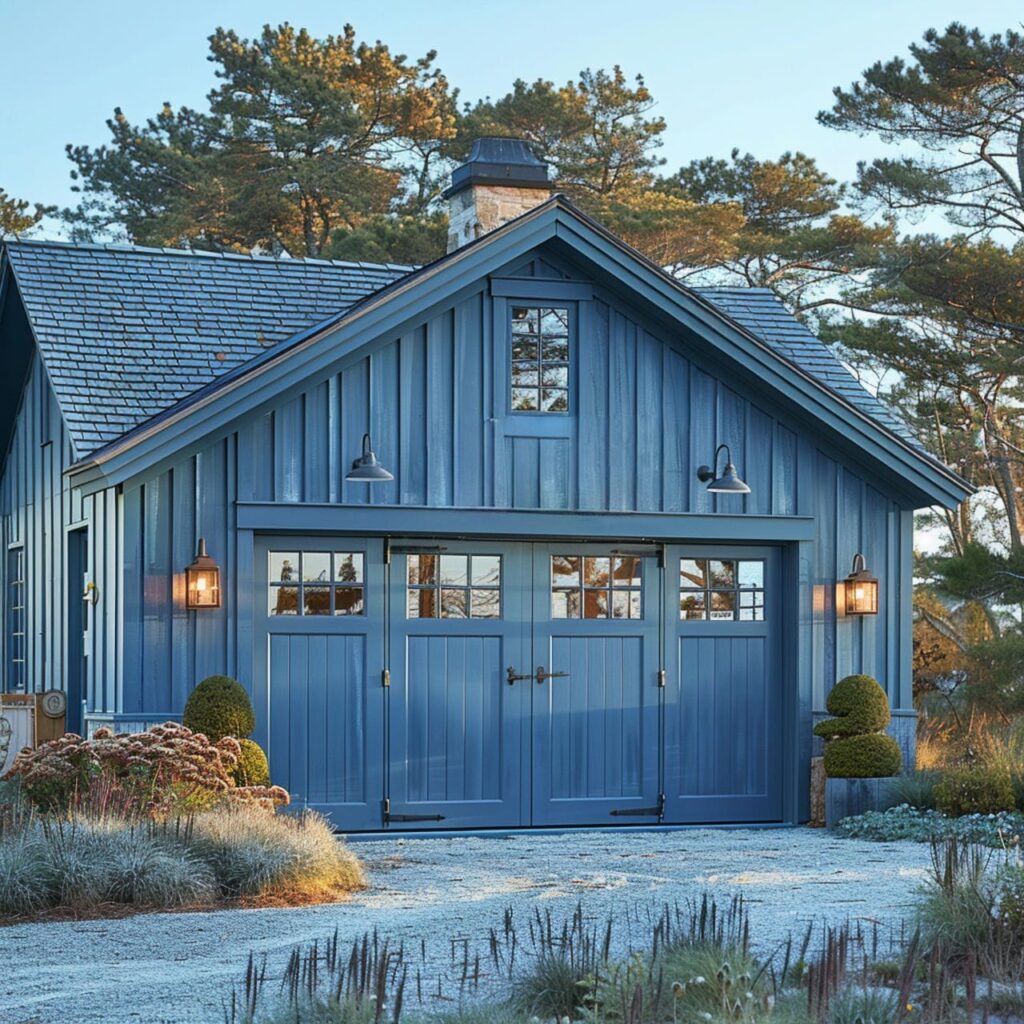Garage renovations include size, functionality, uses, furniture, and costs. Single-car garages typically range from 200 square feet to 240 square feet (18 square meters to 22 square meters) in size, with a ceiling height ranging from 7 feet to 8 feet (2.1 meters to 2.4 meters). The primary purpose of a garage is to store and protect vehicles, but they often serve multiple functions, such as workshops, storage spaces, or recreational areas. Standard garage furniture includes workbenches, tool chests, storage cabinets, shelving units, and organizers for garden and power tools. Garages are painted in white, light gray, beige, neutral blue, tan, or bold and dark colors for added personality. A functional garage features ample storage, durable floors, adequate electrical systems, climate control, and security measures. Garage energy efficiency is achieved through proper insulation, efficient LED lighting, upgraded appliances, and improved climate control systems. The cost of renovating a garage varies depending on its size and the extent of the renovation. An architect is only sometimes necessary for garage renovations, and their expertise can be beneficial for significant structural changes or conversions. Redecorating a garage takes 2-3 weeks, with challenges including budget constraints, design knowledge, space limitations, and time constraints. Homeowners may also face regulatory restrictions and the task of finding reliable contractors.
What is the typical size of a garage?
A typical single-car garage is 200 square feet to 240 square feet (18.6 square meters to 22.3 square meters) of floor space. The interior width ranges from 9 feet to 10 feet (2.7 meters to 3 meters), while the length is 18 feet to 20 feet (5.5 meters to 6 meters). Ceiling heights span 7 feet to 8 feet (2.1 meters to 2.4 meters), allowing enough overhead room for most passenger cars and small trucks. Single garage door opening widths range between 8 feet and 10 feet (2.4 meters to 3 meters). The average two-car garage for two midsize vehicles is 325 square feet to 430 square feet (30.2 square meters to 39.9 square meters). Two-car garage widths allow 10 feet (3 meters) of space per vehicle, and the total interior width ranges from 16 feet to 20 feet (5 meters to 6 meters). Length averages 22 feet to 25 feet (6.7 meters to 7.6 meters). The ceiling height is between 8 feet to 9 feet (2.4 meters to 2.7 meters). The double garage door opening width totals 12 feet to 14 feet (3.7 meters to 4.3 meters). Larger three and four-car residential garages meant for multiple large vehicles exceed 645 square feet (60 square meters) of space. Their increased width allows ample room between cars, ranging from 18 feet to 25 feet (5.5 meters to 7.6 meters) across. Four-car garage length averages 30 feet to 40 feet (9.1 meters to 12.2 meters). Having the headroom for taller vehicles, ceilings are always 10 feet (3 meters), with many four-bay garages over 12 feet (3.6 meters) in height. Bay openings span 16 feet to 20 feet (4.9 meters to 6 meters) to allow easy access.
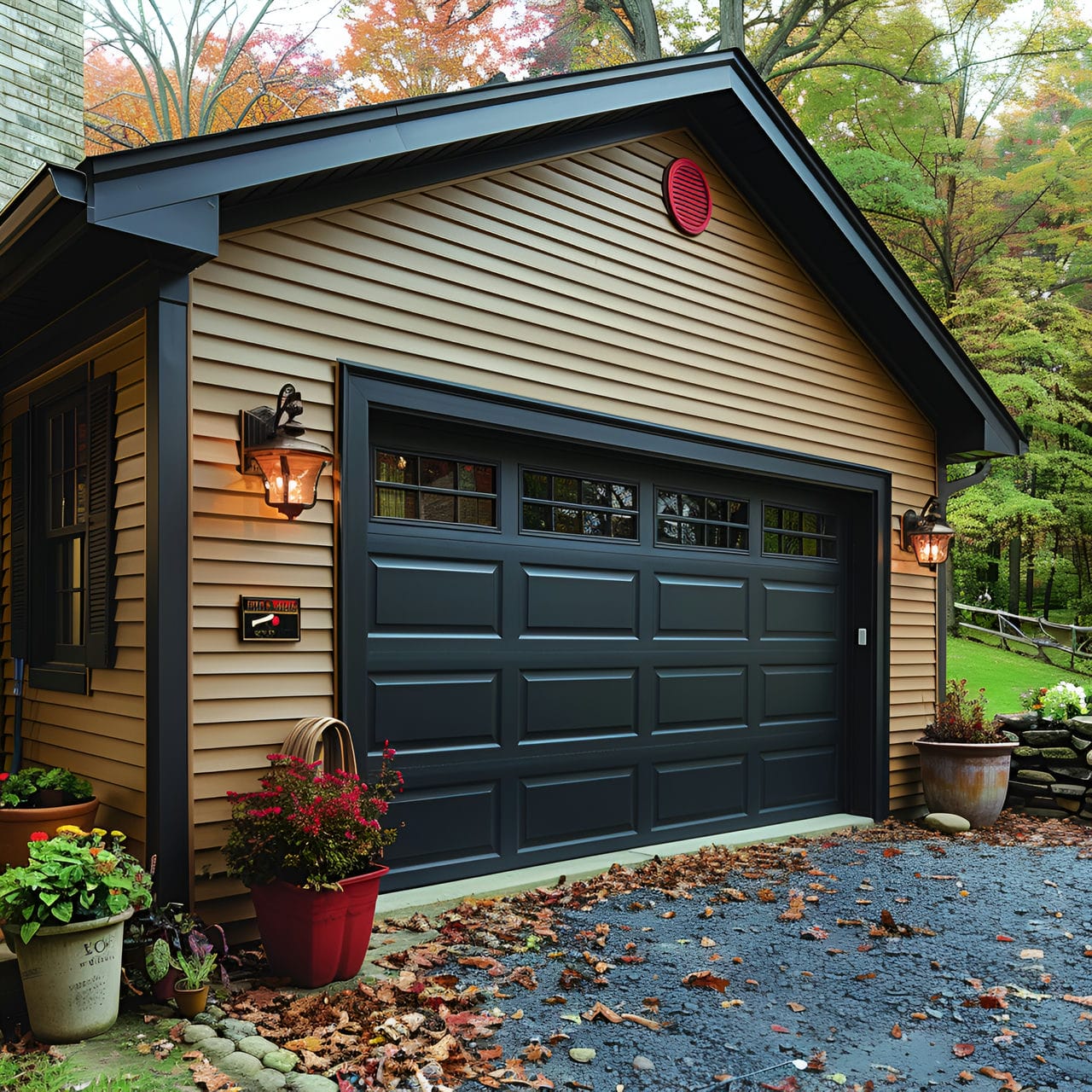
What is the use and purpose of a garage?
The purpose of a garage is to facilitate multifunctional utility, home access convenience, weather resistance, security enhancements, storage capacity, and creative re-purposing. Firstly, the primary purpose of a garage is to store and protect vehicles from weather elements like rain, snow, and sun, as well as from potential theft or vandalism. Garages provide a secure, covered space right next to one’s home to park cars and trucks, safeguarding these financial investments. Secondly, garages serve as versatile multifunction spaces for projects, hobbies, storage, and entertainment. 70% of homeowners use their garages for more than just parking, transforming them into workshops, game rooms, gyms, studios, and more. The enclosed structure protects ongoing projects from weather and provides a private area for activities. Lastly, garages promote convenience through their proximity to the home and lockable exterior access doors. Homeowners can move from vehicle to house interior without exposure to outside conditions. Locked garage doors also enhance home security as an extra barrier to entry that discourages intruders. Garage parking deters crime by valuable possessions stowed inside vehicles.
What is the typical shape of a garage?
The most typical shape for a garage is a simple rectangle or square. Single-car garages generally range from 200 square feet to 240 square feet (18.6 square meters to 22.3 square meters) in floor space, conforming to a pragmatic rectangular shape. The width of a single-car garage spans between 9 feet to 10 feet (2.7 meters to 3 meters), while the length averages 18 feet to 20 feet (5.5 meters to 6 meters) in a standard rectangular layout. Double car garages are wider to accommodate two side-by-side, ranging from 325 square feet to 430 square feet (30.2 square meters to 39.9 square meters), though they retain an elongated, rectangular form. Double garage widths span 16 feet to 20 feet (5 meters to 6 meters) with lengths of 22 feet to 25 feet (6.7 meters to 7.6 meters). More customized three and four-car garages may occasionally use a square floorplan to utilize the area efficiently.
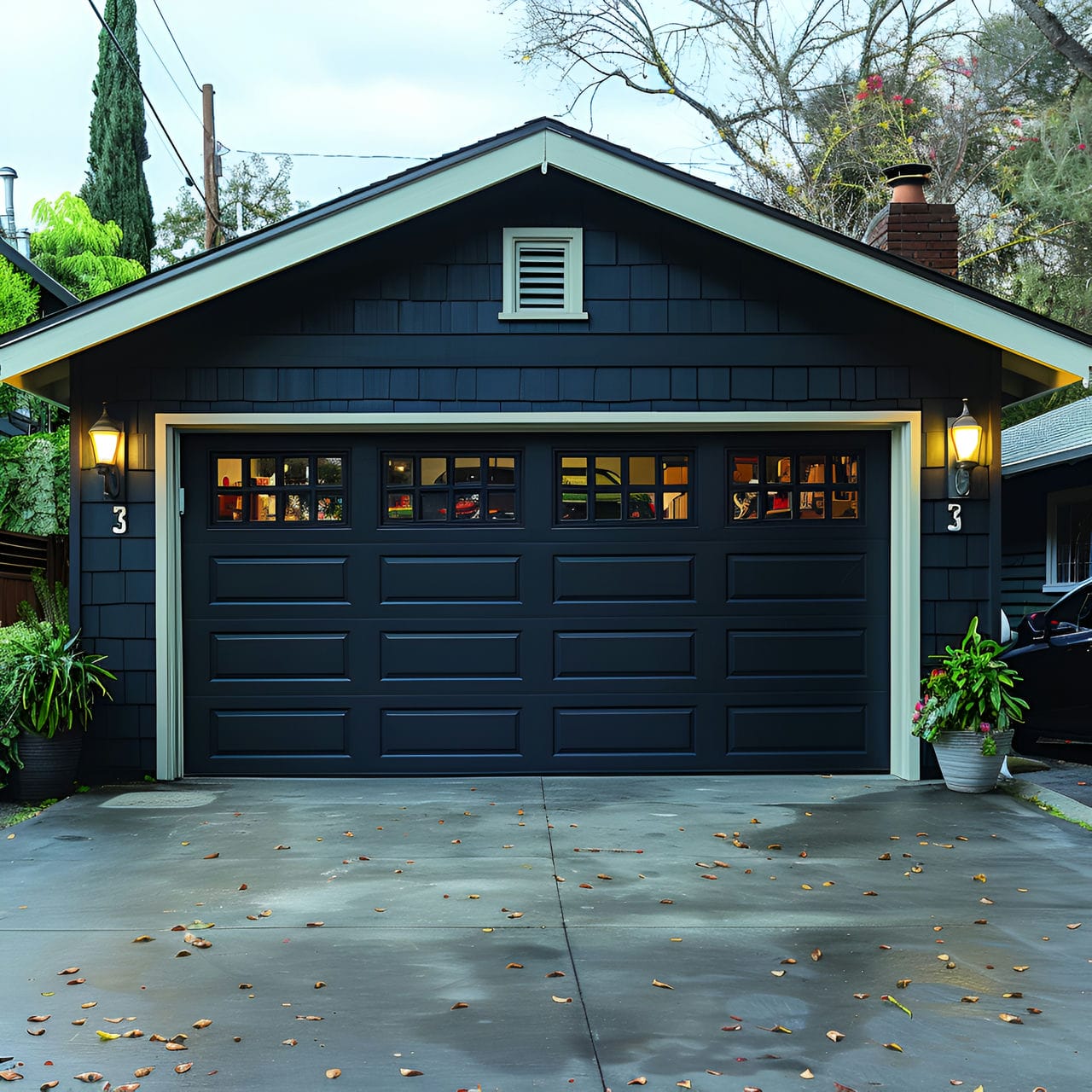
What furniture commonly equips a garage?
Listed below are the types of furniture commonly equip a garage:
- Workbench: A workbench is a staple in many garages. It provides sturdy, flat surface furniture for various tasks, such as woodworking, repairing items, or other DIY projects. Workbenches often come with storage options like drawers and shelves, which can be used to store tools and materials.
- Tool Chest: Tool chests are furniture for storing and organizing various tools. They come in different sizes and configurations, with multiple drawers and compartments. High-quality tool chests are typically durable and may feature locks for added security.
- Storage Cabinets: Storage cabinets in the garage are versatile pieces of furniture that can hold a wide range of items, from tools and equipment to cleaning supplies. They help keep the garage tidy and items out of sight. Some cabinets may come with locking doors for added security.
- Shelving Units: Shelving units are a practical solution for storing items off the floor, making them a common sight in garages. This furniture can hold various items, including bins, boxes, tools, and equipment. Some shelving units are designed to be mounted on the wall, while others are freestanding.
- Power Tool Organizer: A tool organizer is a specialized piece of furniture designed to store and organize tools in the garages. It can hold items like drills, saws, and sanders, keeping them arranged and easily accessible. Some organizers feature compartments or shelves for storing smaller items or accessories related to power tools.
- Ceiling Storage Racks: Ceiling storage racks are excellent furniture for utilizing a garage’s often underused vertical space. They are ideal for storing items that are not frequently used, such as seasonal decorations or bulky items like tires and patio furniture.
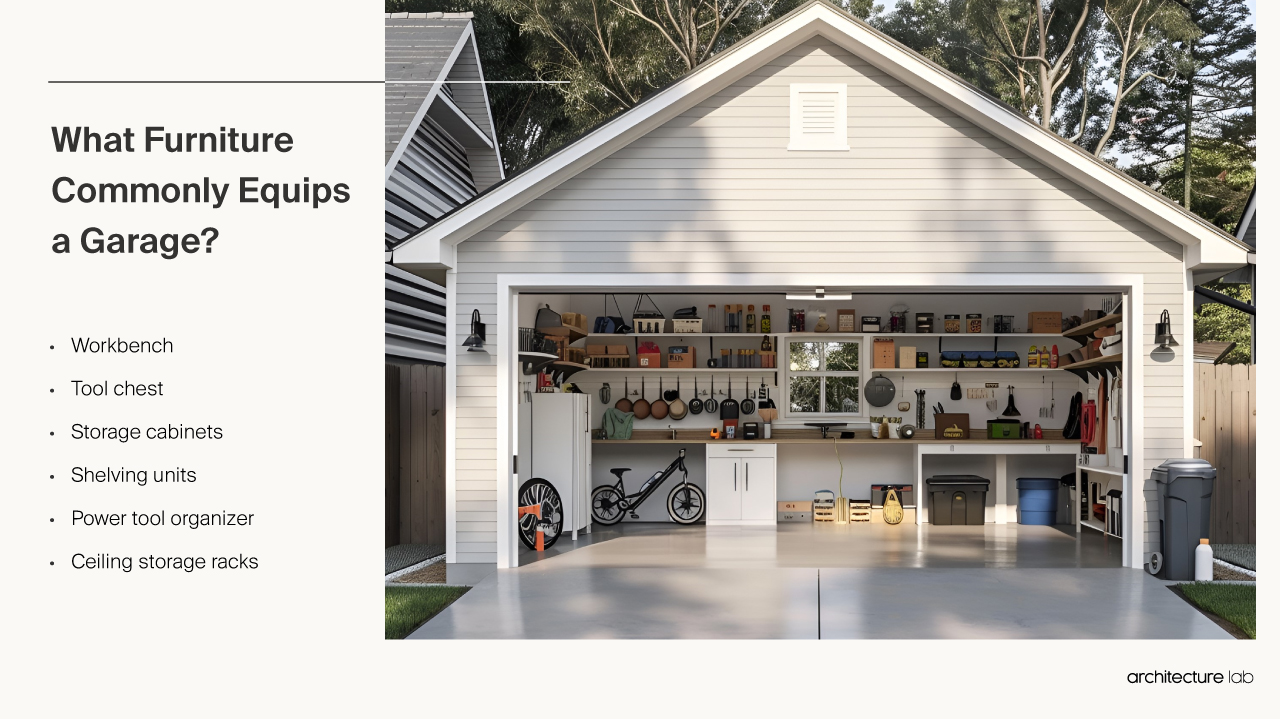
What is the normal ceiling height of a garage?
The normal ceiling height of a garage ranges from 7 feet to 8 feet (2.1 meters to 2.4 meters) in a single-car garage designed for parking one mid-sized sedan or small SUV. This overhead clearance allows most average-sized vehicles to maneuver inside with ample space above the roof quickly. In double-car garages built for parking two cars side-by-side, ceiling heights are slightly taller at 8 feet to 9 feet (2.4 meters to 2.7 meters). The extra headroom enables larger passenger vehicles like vans and light trucks to fit inside the garage comfortably with space to spare above. A height range of 8 feet to 9 feet (2.4 meters to 2.7 meters) works well for most double garage applications. Three and four-car residential garages boast even higher ceilings, starting at 9 feet to 10 feet (2.7 meters to 3 meters) or more, to have sufficient room for multiple full-size trucks and SUVs. Typical single- and double-car garages have adequate overhead space ranging between 7 feet and 9 feet (2.1 meters and 2.7 meters). More customized oversized garages may exceed 10 feet (3 meters) in height, but standard one and two-car garages fall between 7 feet and 9 feet (2.1 meters and 2.7 meters).
What colors are garages usually painted?
Listed below are the colors usually used in garages painted:
- White: White is a popular choice for garage walls. This color reflects light well, making the garage appear brighter, especially if it lacks natural light. White also provides a clean, neutral backdrop for any items stored in the garage.
- Light Gray: Light gray is another common choice for garage walls. It’s a neutral color that can make the space feel calm and organized. It Is a versatile color that can easily match other garage elements, such as cabinets or shelving units.
- Beige: Beige is a warm, neutral color that can make a garage feel more inviting. Beige can help hide dirt and marks better than lighter colors, making it a practical choice for a garage.
- Neutral Blue: Neutral blues can create a relaxing and soothing atmosphere in a garage. This color can make the space feel more comfortable and less functional, especially if the garage doubles as a workshop or hobby area. Blue is versatile and can complement various other colors and materials.
- Tan: Tan is another warm, neutral color that can work well in a garage. It can add color to the space without being too bold or overwhelming. Tan is a practical choice as it can help hide dirt and marks, which can be beneficial in a space with a lot of use, like a garage.
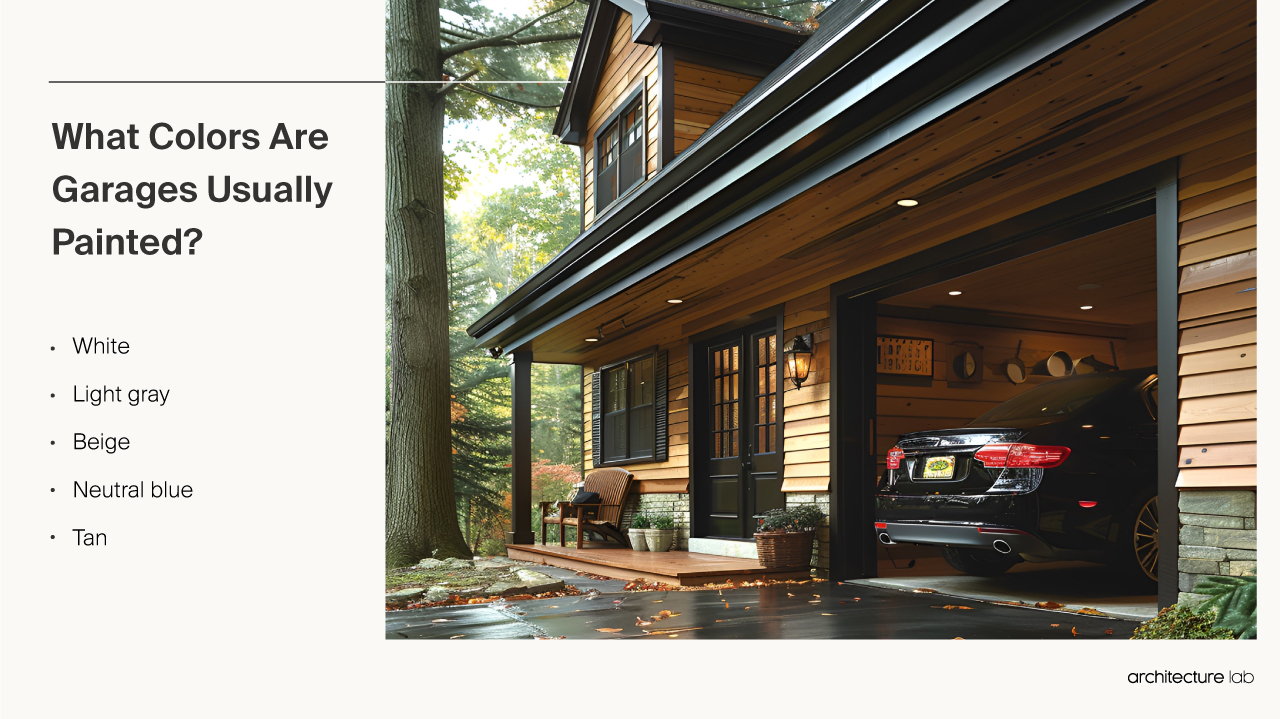
What makes the garage functional?
The Garage is functional with sturdy construction, customized storage, electrical systems, climate control, and security. Firstly, a functioning garage has ample storage solutions to organize items and maximize space. Wall-mounted panels, overhead racks, cabinets, shelves, and other customized storage provide designated areas for tools, equipment, supplies, and seasonal items. Secondly, a garage should have a clean, sealed concrete floor, potentially with tile, epoxy coatings, or drains. Durable surfaces prevent cracking, resist chemicals and liquids, and simplify cleaning after vehicle maintenance or messy hobbies. Thirdly, electrical wiring and ample outlets enable the use of power tools, chargers, appliances, lighting, and electronics like TVs. Higher voltage 220V outlets facilitate equipment like welders. Smart home technology allows remote, automated control of lighting, doors, and more. Fourthly, climate control through insulation, heating, and cooling allows for four-season utility, protecting contents from extreme temperatures. Windows and skylights balance air flow and brightness. Controlled conditions expand how the garage can be utilized. Lastly, functional garages have secure locking doors, vehicles, and walk-throughs, including keyless intelligent access. They may have alarm systems, motion sensors, and cameras. Durability, proper installation, and maintenance thwart break-ins.
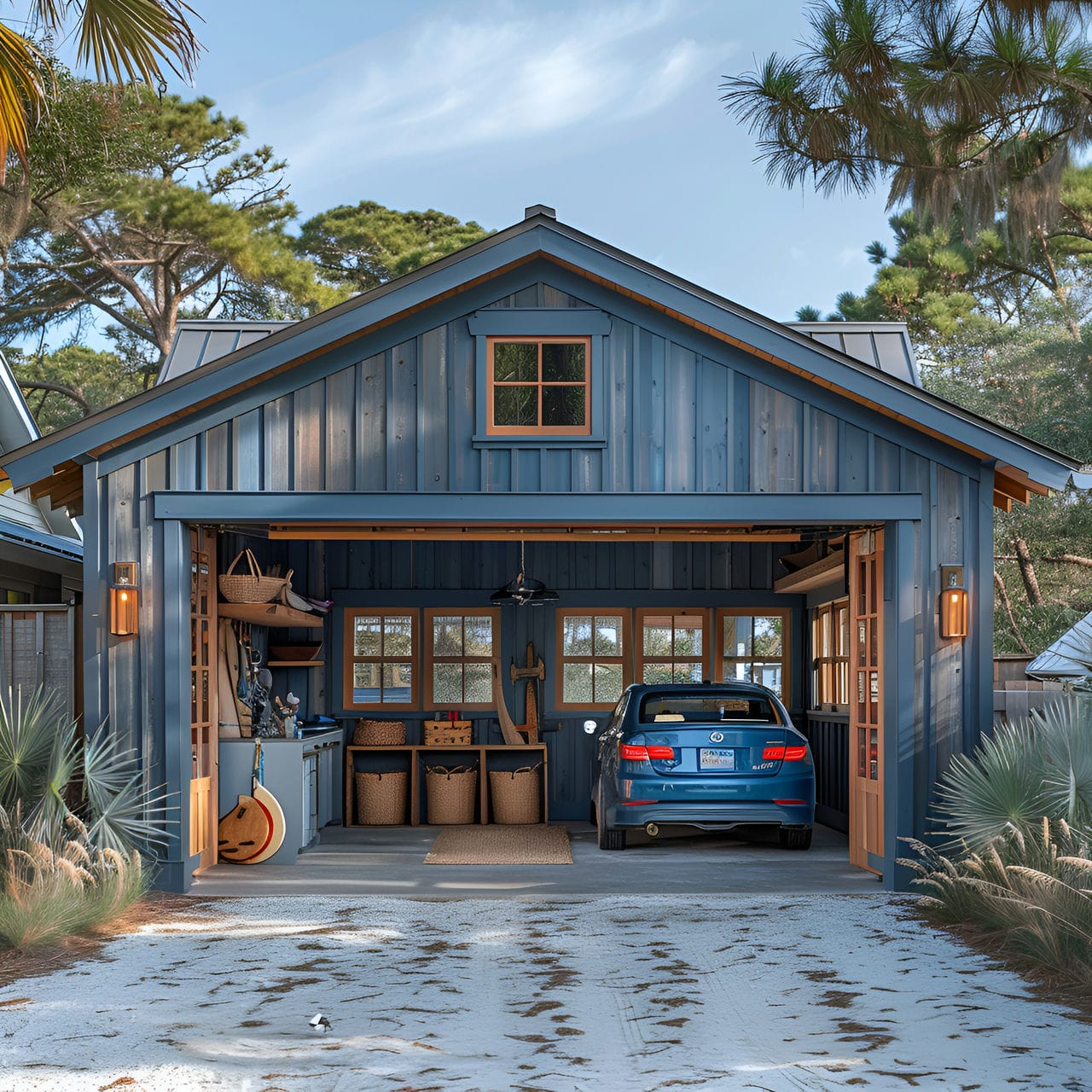
How is energy efficiency achieved in a garage?
Energy efficiency is achieved in a garage by choosing the insulation containment, LED lighting adjustments, appliance upgrades, and climate control improvements. Firstly, insulation is critical for regulating garage temperatures and reducing heating and cooling costs: insulating garage walls and ceilings to recommended R-values blocks outside air transfer. Secondly, energy-efficient LED lighting cuts electricity usage considerably compared to older bulbs to preserve the greenhouse effect. Installing occupancy sensors, dimmers, and timers curbs waste, as does maximizing natural daylight through windows and skylights when possible. Lastly, upgrading old appliances with Energy Star-certified models cuts energy consumption. New energy-efficient garage doors have better insulation ratings. Smart garage temperature controls maintain comfortable conditions while avoiding energy waste.
How much does it typically cost to renovate a garage?
Renovating a single-car residential garage, which spans between 200 square feet and 240 square feet (18 square meters to 22 square meters), runs from $3,000 (€2,760, £2,370) up to $8,000 (€7,370, £6,320). Upgrading a double garage commonly ranges between $5,000 (€4,600, £3,950) and $15,000 (€13,820, £11,850) given their larger 325 square feet to 430 square feet (30 square meters to 40 square meters) size. Cost considerations for garage renovations include the removal of previous wall materials, floor resurfacing, framing, and drywall installation for finished walls/ceilings, insulation installation, new garage doors, and windows, upgraded electrical and lighting systems, interior and exterior paint with finishing trim work, storage additions like shelving and cabinets, and various higher-end customizable amenities like HVAC, luxury flooring or updated architectural facades. More considerable structural overhauls can also raise renovation prices from these typical ranges. The usual minor to mid-range garage upgrades average $3,000 (€2,760, £2,370) to $8,000 (€7,370, £6,320) for single car and $5,000 (€4,600, £3,950) to $15,000 (€13,820, £11,850) for double car garages, with pricing dependent upon remodel scale, materials and custom features.
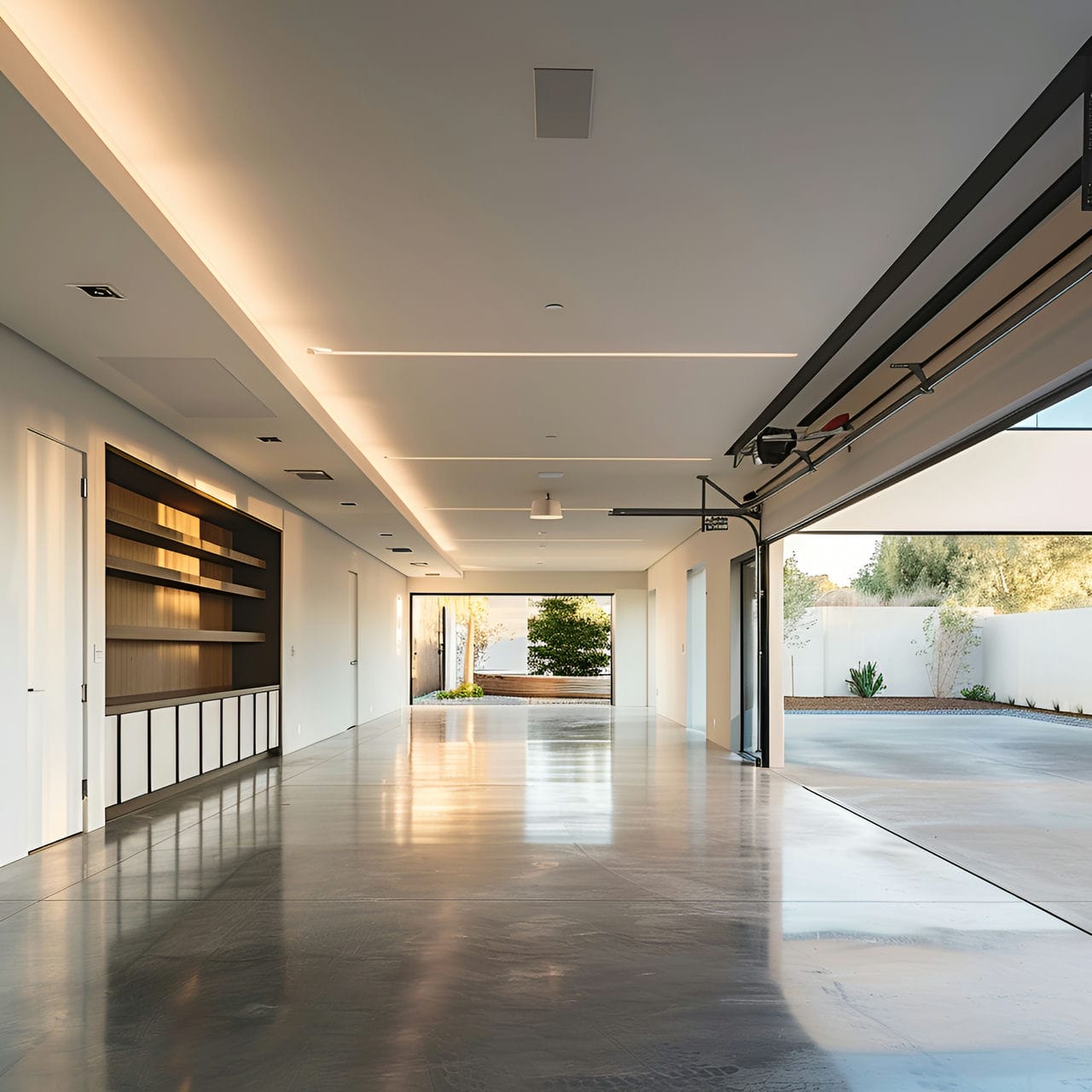
What factors affect the garage renovation?
Listed below are the factors that affect the garage renovation:
- Budget Constraints: The budget is a critical factor that affects garage renovation. It determines the scope and quality of the renovation, including the materials used, the extent of structural changes, and the types of fixtures and finishes that can be afforded.
- Purpose of Renovation: The intended use of the renovated garage dramatically influences the design and renovation decisions. The space will serve as a workshop, additional living space, or simply for improved storage, which will dictate the required layout, materials, and features.
- Building Permits and Regulations: Compliance with local building codes and obtaining the necessary permits is essential for any garage renovation. These regulations can affect the project timeline, design, and even the feasibility of specific changes. Permits ensure that the refurbishment meets safety standards and may be required for electrical, plumbing, and structural work.
- Existing Structure and Space: The current condition and garage layout can pose limitations or opportunities for renovation. Structural issues must be addressed, and the available space will influence what can be realistically achieved.
- Contractor Expertise: The experience and skill level of the contractor or renovation team can significantly impact the quality and success of the garage renovation. A skilled contractor can provide valuable insights, avoid common mistakes, and ensure that the renovation is completed efficiently and to a high standard.
- Material Availability and Quality: The availability and quality of materials can affect the renovation timeline, cost, and final appearance of the garage. High-quality materials may offer better durability and aesthetics but can also increase the project’s cost.
- Storage and Organization Needs: A garage renovation should address the storage and organization needs of the homeowner. This includes considering the types of items to be stored and the best ways to accommodate them, such as through built-in cabinets, shelving, or overhead storage solutions.
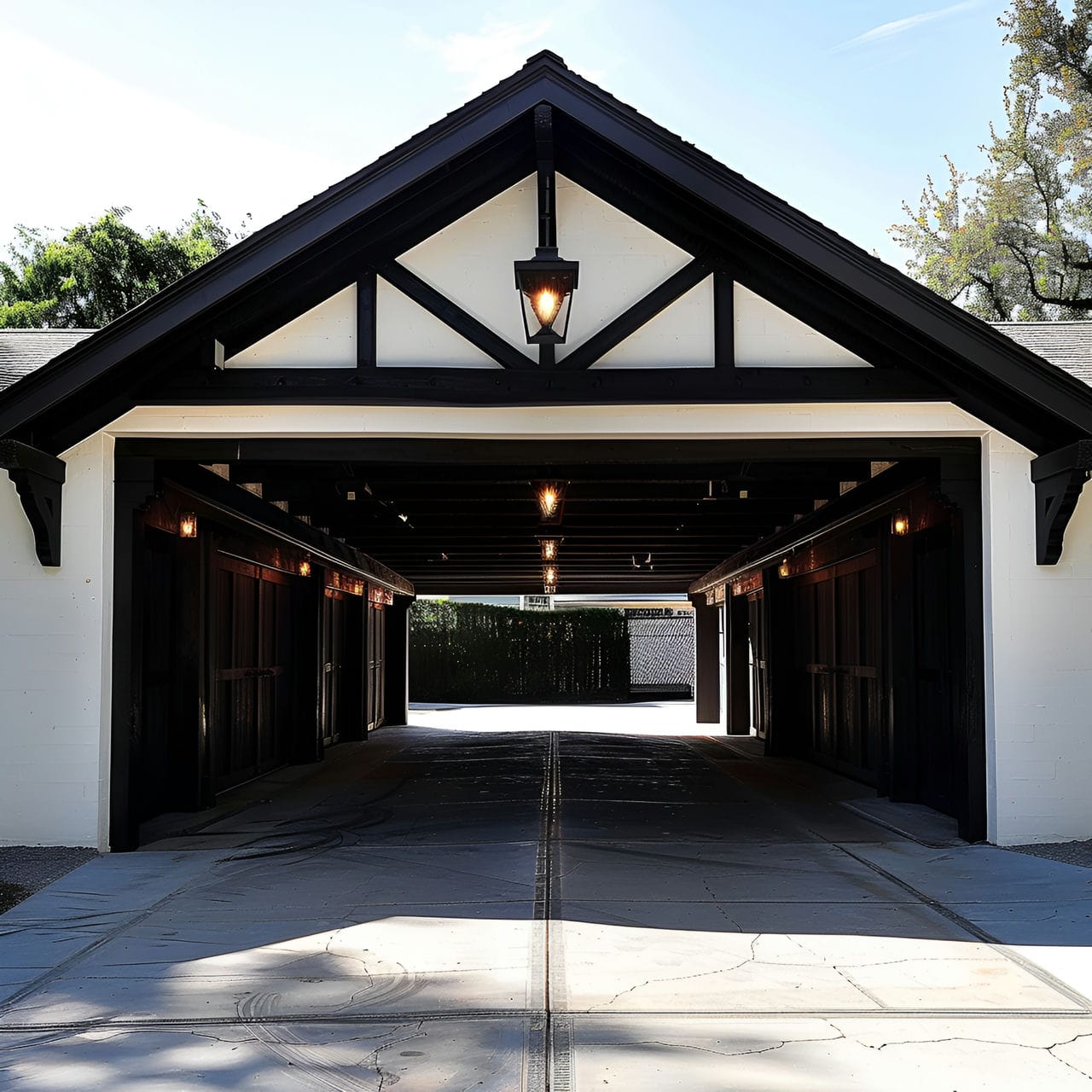
Is an architect required to renovate a garage?
No, an architect is not required to renovate garages but it is recommended. A knowledgeable contractor can sufficiently plan structural changes, draft layouts, obtain permits, and oversee the garage remodel without the architect’s involvement. State and local building codes also do not mandate using accredited architects for typical small-scale garage renovations, upgrades, or conversion projects in single-family homes. For substantial structural renovations, or when converting an existing garage into additional living space or an accessory dwelling unit, the expertise of an architect may be advisable to ensure adequate design and compliance with regulations.
How can an architect help you upgrade a garage?
Listed below are the ways that an architect can help an owner upgrade a garage:
- Design Expertise: An architect brings professional design expertise to a garage upgrade, ensuring the space is functional and aesthetically pleasing. They have the education and training to create spaces that meet clients’ needs while enhancing their lifestyles.
- Site Assessment and Planning: An architect can assess the site of a garage, considering zoning regulations, site constraints, and opportunities. This initial analysis is crucial for understanding what can be done with the space and ensuring that any upgrades comply with local building codes and ordinances.
- Project Management: Hiring an architect for a garage upgrade means having someone to manage the project from start to finish. They can oversee the construction process, ensuring the contractor follows the design plans and the project stays on track.
- Cost Savings: An architect can provide value engineering, suggesting ways to achieve desired features at a lower cost. They can recommend economical materials or building methods that produce the same effect as more expensive options.
- Customization and Personalization: An architect can tailor the garage upgrade to the homeowner’s needs and preferences. An architect can design a customized space, whether the garage is used as a workshop, additional living space, or storage.
- Regulatory Compliance: An architect can navigate the complexities of building permits and regulations, ensuring the garage upgrade complies with all local requirements. They can handle the paperwork and submissions needed for permits, which can be a complex and time-consuming process for homeowners to manage on their own.
- Enhancing Property Value: A well-designed garage upgrade can increase the value of a property. An architect can create a design that serves the homeowner’s needs and appeals to future buyers.
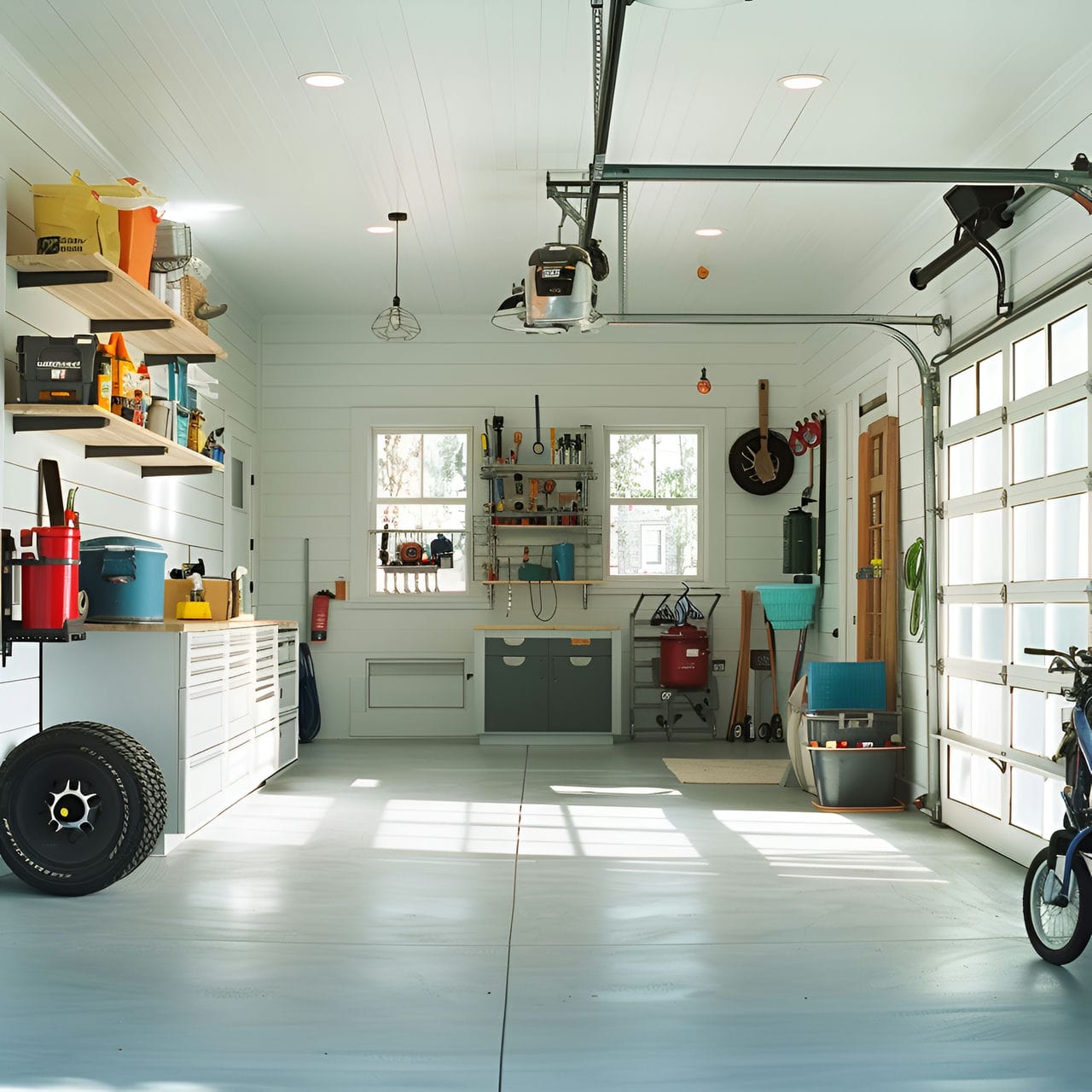
How much does it cost to hire an architect to renovate a garage?
The services of a residential architect range from $2,000 (€1,840, £1,580) for consultation and basic design layouts up to $5,000 (€4,600, £3,950) or more for extensive plans with permit approvals. Architectural billable hours span $100 (€92, £79) to $150 (€138, £118) per hour. One-car garages ranging from 200 square feet to 240 square feet (18 square meters to 22 square meters) on the small end benefit the most from simple consultations and layouts costing $2,000 (€1,840, £1,580) to $3,000 (€2,760, £2,370). For more oversized double garages or more complex renovations, extensive schematics and permit coordination runs $3,500 (€3,220, £2,760) up to $5,000+ (€4,600+, £3,950+). Some towns even offer expedited approval using registered architects familiar with local codes. So while not mandatory, architectural services for significant garage renovations provide helpful guidance costing $2,000 (€1,840, £1,580) up to $5,000 (€4,600, £3,950) for more involved remodeling projects.
Is it worth it to hire an architect to upgrade a garage?
No, hiring an architect can provide helpful, professional guidance when considering substantial garage renovations, but it may be an unnecessary added expense for minor upgrades or basic refurbishments. Simple aesthetic facelifts like adding drywall, resurfacing the floor, and installing new garage doors or shelving don’t warrant complete architectural services. Unless structural elements are altered, homeowners or contractors can complete more minor custom upgrades without incurring architect fees.
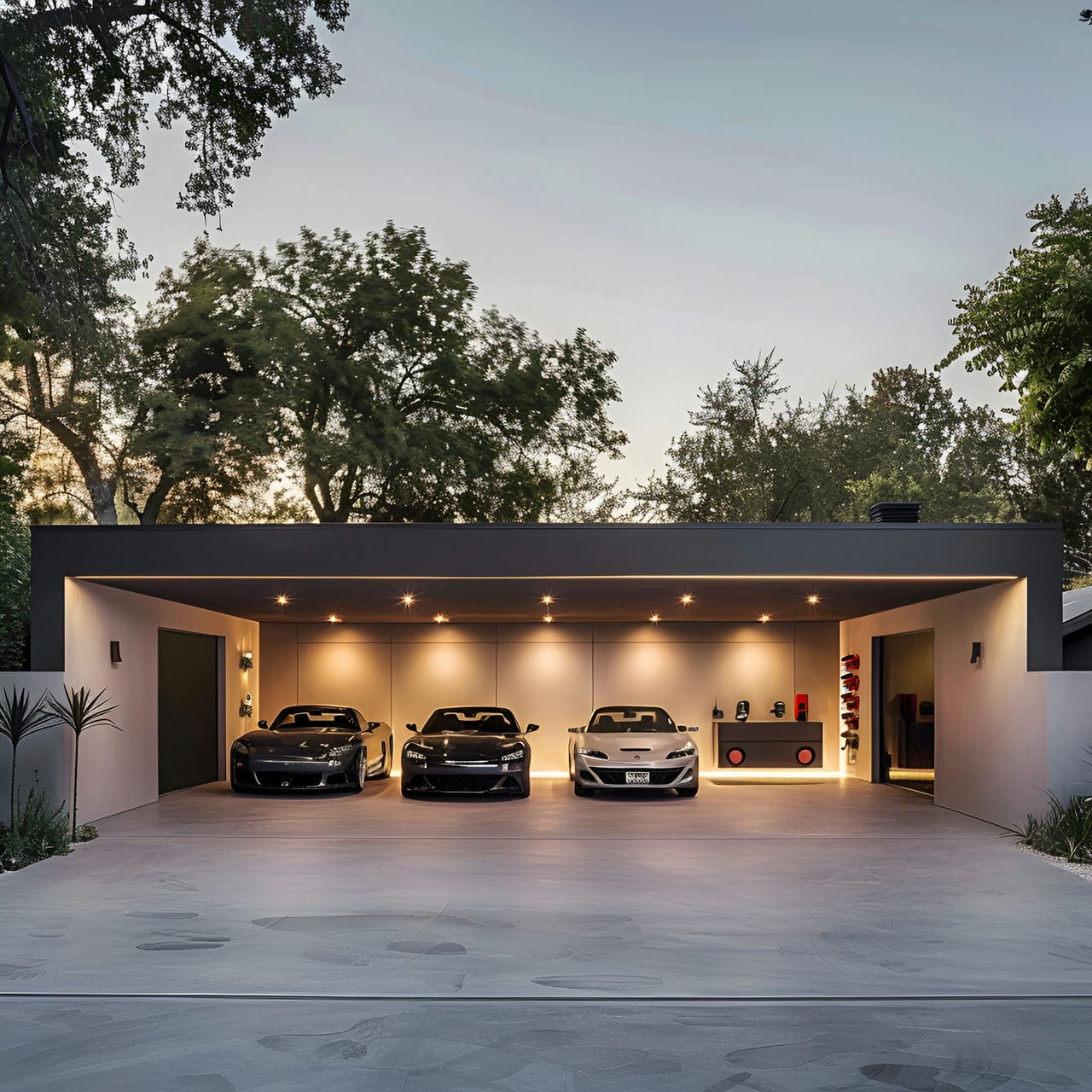
How long is needed to redecorate a garage?
2 to 3 weeks is needed to redecorate the garage. Firstly, Firstly, planning is crucial. This involves assessing the current state of the garage, identifying the desired changes, and creating a realistic timeline for the project. This stage may also involve hiring professionals if necessary. Secondly, preparation is key. This could involve cleaning the garage, removing old paint, and repairing any damage. The preparation stage is labor-intensive and can take several hours or even a few days, depending on the condition of the garage. Thirdly, painting is a significant part of redecorating a garage. Painting the walls and ceiling can take anywhere from 1-2 hours to 4-5 hours, depending on the garage size and the painting method used. If a sprayer is used, the process can be quicker, but it may take longer without a sprayer. Fourthly, adding storage solutions and decor can also be part of redecoration. This could involve installing shelves, cabinets, or other storage solutions and adding decorations such as signs, rugs, or lighting fixtures. Lastly, clean-up is a necessary part of the process and can take 30 minutes.
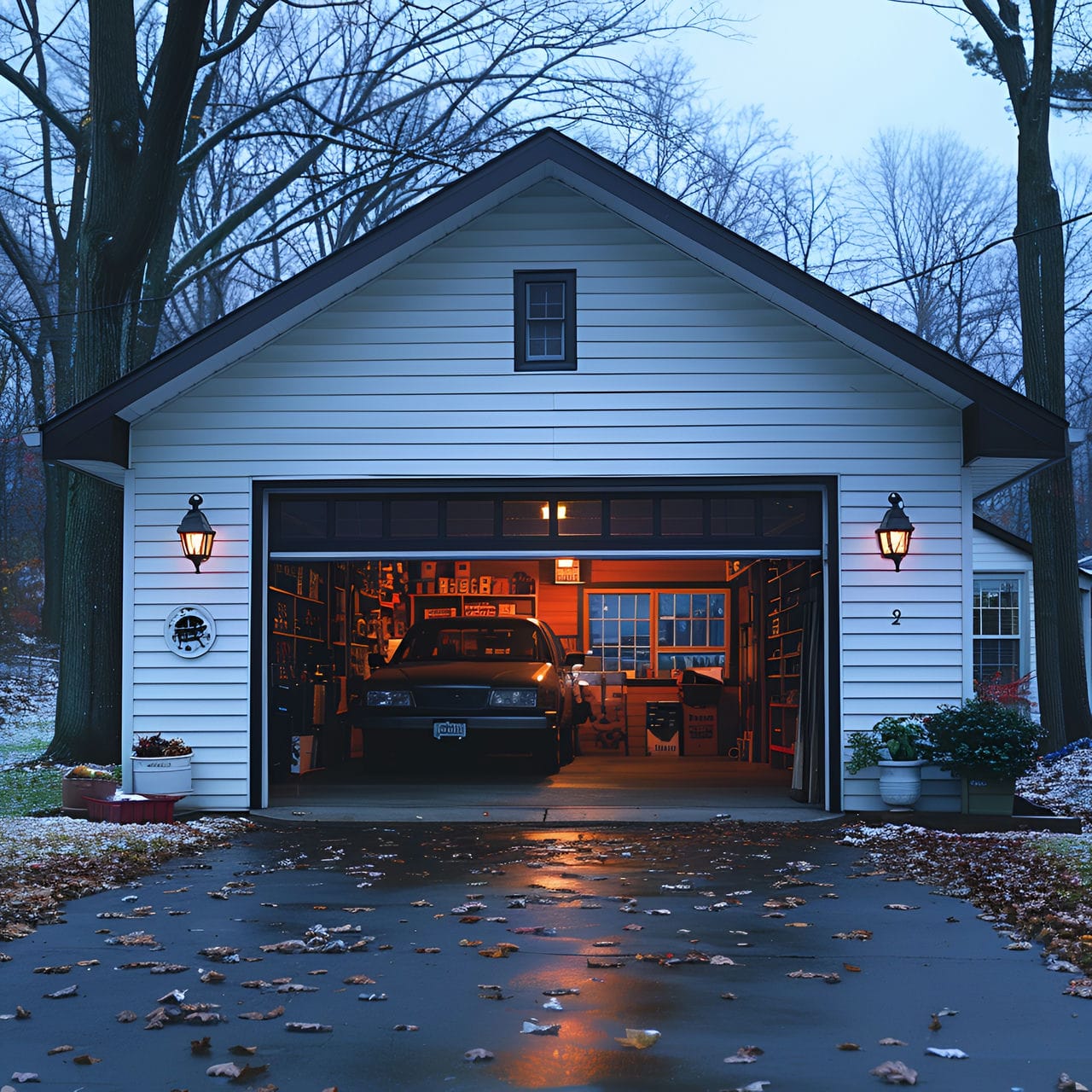
What are the struggles of the homeowner to redecorate a garage?
Listed below are the struggles of the homeowner to redecorate a garage:
- Budget Constraints: One of the most common struggles homeowners face when redecorating a garage is budget constraints. Redecorating can involve significant costs, including materials, furniture, and potentially hiring professionals like architects or contractors. Homeowners must balance their desire for a high-quality, pleasing result with the financial resources available to them.
- Lack of Design Knowledge: Many homeowners need more design knowledge in their garage. This can make creating a cohesive, functional design for the garage difficult. Homeowners may need help choosing colors, arranging furniture, and selecting suitable materials and finishes. This lack of expertise can lead to costly mistakes and a less-than-satisfactory final result.
- Space Limitations: Garages are often limited in space, which can pose a challenge when redecorating. Homeowners must find ways to maximize the use of the space, which can involve creative storage solutions and careful layout planning.
- Time Constraints: Redecorating a garage can be a time-consuming process. Homeowners often need help finding the time to plan, shop for materials and furniture, and carry out the redecoration. This can be challenging for those working full-time or with other significant commitments.
- Regulatory Restrictions: Homeowners may face regulatory restrictions when redecorating their garages, mainly if structural changes are involved. They may need permits to ensure their plans comply with local building codes.
- Finding Reliable Contractors: If homeowners hire professionals to assist with the redecoration, finding reliable, skilled contractors can be challenging. Finding reputable contractors, providing high-quality work, and charging reasonable rates is essential.
- Dealing with Unexpected Issues: Homeowners often encounter unexpected issues during redecoration. These can include discovering structural problems, such as dampness or rot, that must be addressed before redecoration. Unforeseen issues can include delayed delivery of materials or furniture or difficulties installing certain elements. These issues can cause stress, increase costs, and delay project completion.
